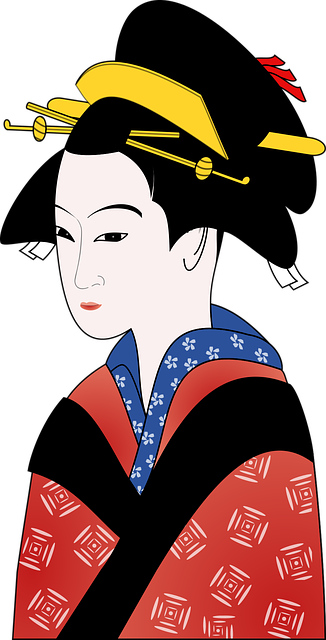Eazywraps is based on Furoshiki, a traditional Japanese wrapping fabric. A square piece of cloth that has been used for centuries to wrap gifts, carry possessions, as well as to protect and decorate valuable items. Its history dates back to at least the Nara period (710-794 AD), when Nara was Japan’s capital city. Originally called “tsutsumi" which means bundle/package/present - as represented by the Japanese symbol for tsutsumi – a baby wrapped in the mother's womb. 包
There is conflicting information as to when the name "Furoshiki" was given to the wrapping fabric. It was either during the Muromachi period (1338–1573 AD) or during the Edo period when bathhouses became available to the general public.
 One indisputable fact is that Furoshiki can be broken down into two words: "furo" meaning bath and "shiki" meaning spread. Legend has it that during the Muromachi period, Shogun Ashikaga used to invite the feudal Lords to visit his steam bathhouse, where they would wrap their kimonos in silk Furoshiki, enabling their clothes to be easily identified by their family crest on the wrapping fabric. When they emerged from bathing, they would unwrap the Furoshiki and use it to lounge on (which must have been most uncomfortable!) and to stand on when getting dressed. The original version of the towelling ‘bath sheets’ we use today.
One indisputable fact is that Furoshiki can be broken down into two words: "furo" meaning bath and "shiki" meaning spread. Legend has it that during the Muromachi period, Shogun Ashikaga used to invite the feudal Lords to visit his steam bathhouse, where they would wrap their kimonos in silk Furoshiki, enabling their clothes to be easily identified by their family crest on the wrapping fabric. When they emerged from bathing, they would unwrap the Furoshiki and use it to lounge on (which must have been most uncomfortable!) and to stand on when getting dressed. The original version of the towelling ‘bath sheets’ we use today.
During the Edo period (1603-1868 AD), Public bathhouses (called a sento) became popular. Furoshiki was used to wrap and carry clothes and other personal belongings to and from public baths. People would place their clothes and items on the Furoshiki, tie the corners together, then carry the bundle on their backs or over their shoulders.
Over time, Furoshiki's usage expanded beyond the bathhouses, becoming a versatile everyday tool essential to tradespersons, merchants, and the working class to carry or store their goods.
During the Meiji Period (1868-1912): : The village of Edo was renamed Tokyo and' common people' were now allowed to use a family crest on their Furoshiki too.
Furoshiki gained even greater popularity as it became associated with cultural practices and etiquette. It was often used to wrap and present gifts, with the way the Furoshiki was folded and tied conveying different meanings. Playing an important part in some Japanese ceremonies, the cloth and its wrapping techniques became ingrained in Japanese culture.
Furoshiki are made from silk, cotton, or other materials, and their designs can be plain or intricate, depending on the intended purpose and the owner's preferences. The economically disadvantaged early versions were cheaper, simple and utilitarian in nature, whereas cloths for the nobles were adorned with intricate designs and patterns that reflected the wearer's status, tastes and bank balance!
In the mid-20th century, particularly after World War II, as modernization and convenience took hold, the use of Furoshiki declined, and more disposable packaging materials became prevalent. People had to be frugal and paper bags became popular due to scarcity of the more traditional textiles.
In 2005. through the dedication and hard work of a Kenyan activist, Wangari Maathai, a large corporation, and Japanese newspapers, The MOTTAINAI Campaign was born. It is a movement in Japan championing the 4 R's: Reduce, Reuse, Recycle—and Respect. Mottainai is often translated as “What a waste!”
In 2006, the Japanese Ministry of the Environment launched a Furoshiki Reuse Campaign to promote the use of Furoshiki as an eco-conscious choice and an environmentally friendly alternative to single-use bags and wrapping materials.
In more recent years, there has been a resurgence of interest in Furoshiki as part of a conscience shift toward sustainability and reducing waste in Japan. The idea of reducing waste and utilizing one cloth for multiple purposes regained popularity. Furoshiki’s eco-friendly qualities have gained international attention in the 21st century as a stylish and environmentally friendly way to wrap gifts, carry items, and reduce the use of disposable packaging, with the added versitility it offers in terms of wrapping awkward shapes. For examples of use options click here.
Traditionally, when the wrapping cloth is used to wrap a gift, the recipient of the gift returns the Furoshiki back to the giver of the gift. To read more about this concept click here.
Today you will find Furoshiki on show in Museums around the world, together with woodblock prints, showing the everyday uses of the Japanese wrapping fabric.
In the old Japanese capital city of Nara, 9,000 treasures are preserved within the wooden structure of Shōsō-in. Amongst the artefacts are pieces of tsutsumi. The treasure house is not open to the public, however artefacts are displayed within special exhibitions at the Nara National Museum.
Using Furoshiki is more than just wrapping a gift or carrying your possessions, you are enveloping objects with meaning and thoughtful purpose.